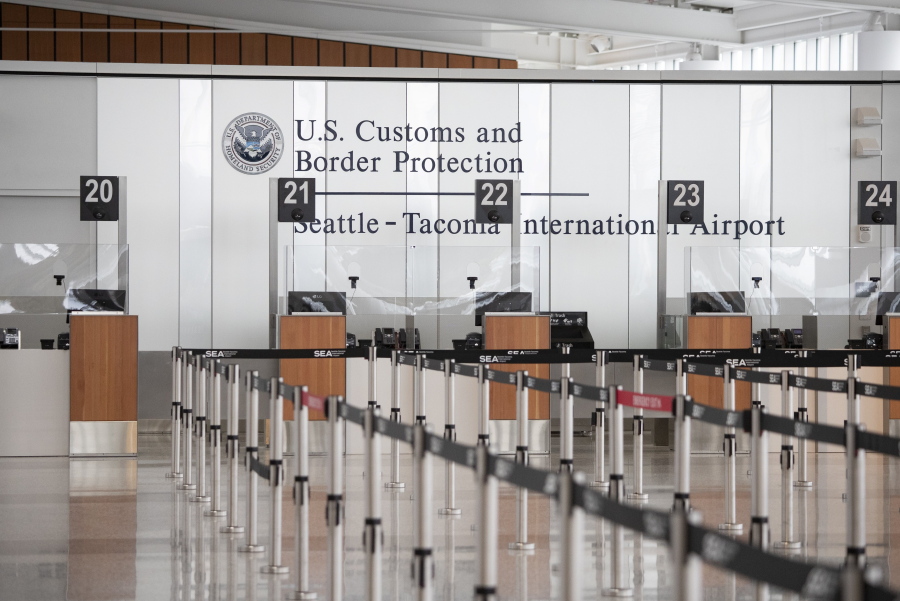SEATTLE — A splashy celebration Thursday of the imminent opening of a new International Arrivals Facility at Seattle-Tacoma International Airport showcased the building’s magnificent architecture that will provide incoming travelers a fitting welcome to the Pacific Northwest.
The spacious new facility, which cost close to $1 billion, is expected to open to travelers in about a month. Ryan Calkins, president of the Port of Seattle Commission, said the building “with its soaring windows and its sweeping grandeur, finally feels like the kind of place remarkable enough to be our region’s front porch to the world.”
Yet with a war raging in Europe that has people all over the world on edge, the ceremonial ribbon-cutting developed an unexpectedly sharp political focus.
Rather than talk about air travelers arriving here in the abstract, state and airport officials recalled this region’s history of welcoming refugees and pledged that this majestic building will welcome families fleeing the devastating war in Ukraine.



